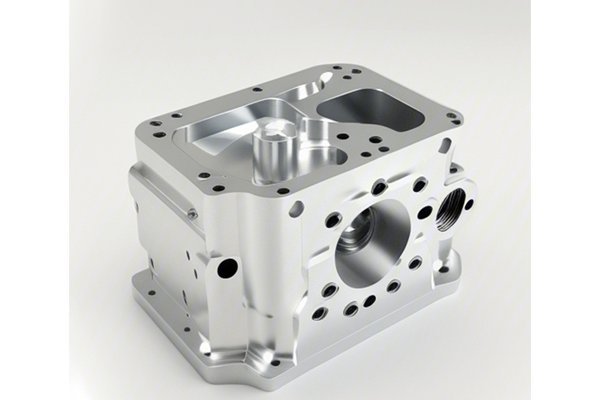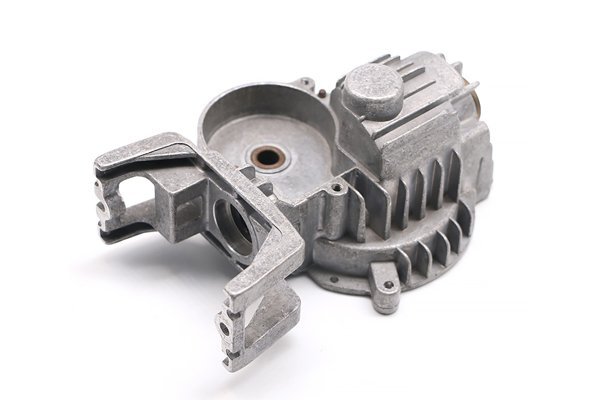Did you know that the choice of material can drastically affect the efficiency and quality of a CNC machining process? For instance, 304 stainless steel, a frequently used alloy for various industrial applications, has unique attributes that can influence its cutting speed when machined. CNC machining, which stands for Computer Numerical Control machining, is a highly automated process used to create precision components and parts. With its increasing application across diverse industries, understanding how different materials, particularly stainless steels, behave under machining conditions is vital for manufacturers.
Stainless steels are broadly categorized into several grades, each with its specific alloying elements and properties affecting machinability. The emphasis on cutting speed is crucial as it directly impacts efficiency, production time, tool wear, and ultimately, the bottom line. This blog post thoroughly examines the cutting speed differences of 304 stainless steel compared to other stainless steels during CNC machining and provides solutions and strategies for optimizing machining performance.
Understanding Stainless Steels
Before diving into cutting speeds, it’s essential to get acquainted with what stainless steel is and its classifications. Stainless steels are iron-based alloys comprising a minimum of 10.5% chromium, providing corrosion resistance through a protective oxide layer. They are primarily classified into different groups based on their crystalline structure:
Why 304 Stainless Steel?
304 stainless steel is particularly significant due to its favorable mechanical properties, corrosion resistance, and good formability. Its composition typically includes 18% chromium and 8% nickel, giving it exceptional resistance to oxidation and corrosion across a wide range of environments. As a popular choice for a variety of applications, including food processing, chemical handling, and architectural use, understanding its cutting speed can help designers and engineers effectively use it in production.
Factors Influencing Cutting Speed
When machining any material, several factors influence the cutting speed, especially for stainless steels:
Comparing Cutting Speeds
The cutting speed of a material primarily refers to the linear distance covered by the cutting tool or the workpiece during machining and is typically measured in surface feet per minute (SFM) or meters per minute (m/min).
Cutting Speed for 304 Stainless Steel
The recommended cutting speeds for 304 stainless steel commonly range between 70 and 125 SFM (approximately 21 to 38 m/min) depending on the machining operation (turning, milling, drilling, etc.).
Other Stainless Steels
For comparison, let’s examine how other stainless steels perform:

Summary of Comparison
| Stainless Steel | Recommended Cutting Speed (SFM) |
|—————–|———————————-|
| 304 | 70
| 303 | 100
| 316 | 50
| 420 | 40
| 2205 | 60
Optimizing Cutting Speed for 304 Stainless Steel
Choosing the Right Tool
Using the correct cutting tool material is crucial for optimizing cutting speeds. Carbide tools are highly recommended for stainless steel, particularly for 304, due to their resistance to wear and ability to withstand higher temperatures produced during cutting. Coated carbide tools can significantly increase tool life and improve cutting speeds due to reduced friction and improved chip removal.
Adjusting Machining Parameters
To maximize cutting performance, machinists can adjust a few key machining parameters:
Utilizing Cooling Techniques
Implementing effective cooling techniques such as flood cooling, misting, or high-pressure coolant can mitigate heat buildup during the process. Higher temperatures can lead to tool deterioration and material hardening, ultimately reducing achievable cutting speeds.
Tool Path Strategies
Utilizing optimal tool paths reduces cutting time and improves surface finish. Techniques like climb milling can be advantageous for machining stainless steels, wherein the tool enters the workpiece at the thickest edge, gradually removing material.
The Importance of Testing and Feedback
Testing different conditions under actual machining processes plays a significant role. Every CNC machine and tooling combination can yield different results, so performing practical trials and monitoring tool wear can provide actionable insights into optimizing performance.
Often using a combination of software simulations and on-site tests can yield better predictive results. Data-driven decisions based on feedback loops allow manufacturers to adjust parameters and thus maximize cutting speeds based on observed performance.
In conclusion, understanding the differences in cutting speeds between 304 stainless steel and other stainless steels is vital for successful CNC machining operations. While 304 stainless steel has specific cutting speed recommendations, its performance can vary based on several factors, including material composition, tooling used, machining parameters, and cooling techniques.
By choosing the appropriate tools, optimizing machining parameters, and actively testing various conditions, manufacturers can effectively enhance cutting speeds and efficiency. The world of CNC machining holds profound implications in numerous industrial sectors, making it critical to grasp the nuanced behaviors of different materials.
Why This Blog Matters
This comprehensive exploration emphasizes not just the technical parameters of cutting speeds, but also highlights the importance of having a scientific approach to machining practices. Knowledge about the materials and processes involved in CNC machining can lead to more informed decisions, resulting in greater productivity, higher quality parts, and improved cost-effectiveness.
By placing a higher focus on material behavior, we open avenues not only for improving existing practices but also for exploring new innovations within the realm of CNC machining. In a fast-paced industrial world, knowledge and adaptability are key. Understanding these dynamics makes you not just a user of CNC technology but a savvy contributor to its continual evolution.






